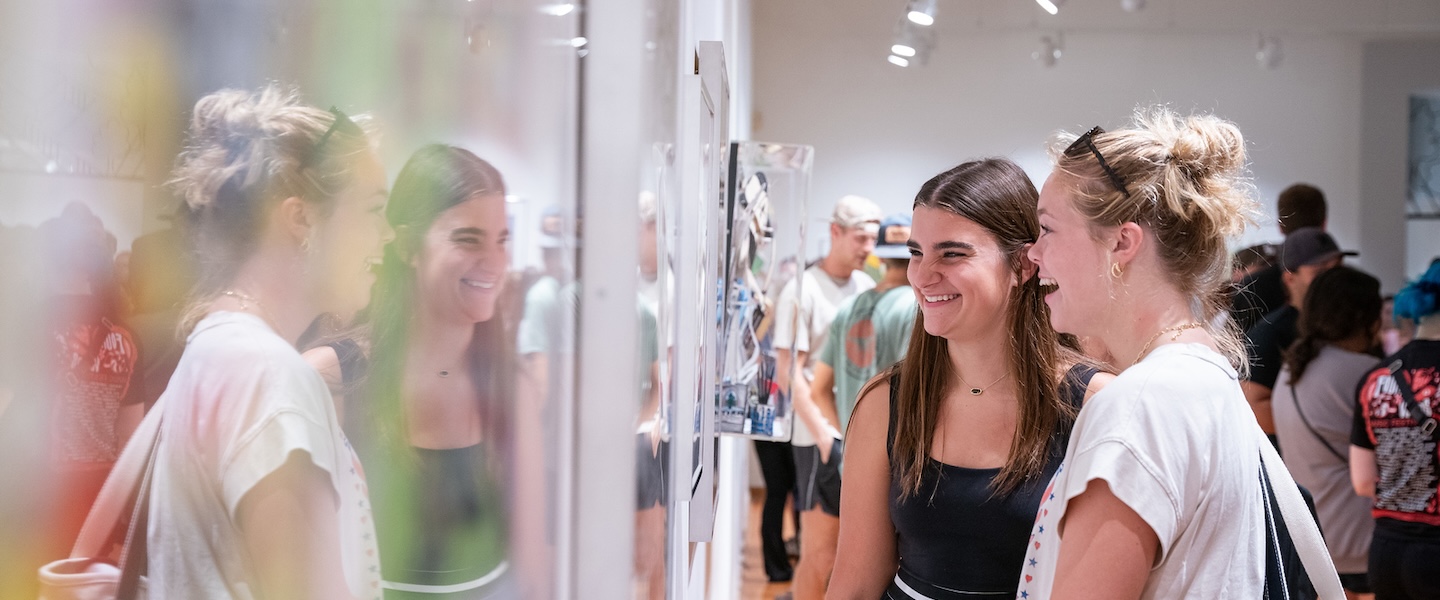Belmont students transformed their spring semester into a real-world curatorial experience, bringing the vibrant works of Nashville native Red Grooms to campus. This project, born from the spring’s first museum studies class within the Watkins College of Art, enriched the students' academic journey and brought a slice of Nashville's artistic heritage to the public.
Pieces Fall into Place
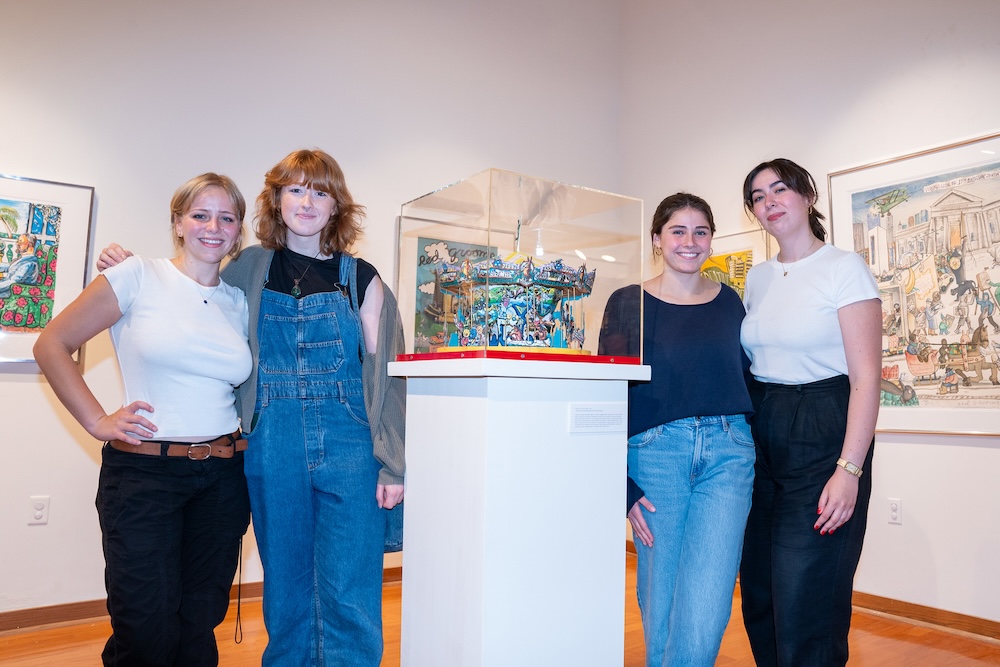 Professor Tom Williams, who led the class, explained the project’s significance. “I'd long been interested in teaching classes which allowed students to organize exhibitions. They're hard to do because it takes more than a semester to put together a show,” he said. “But in this particular case, it was this remarkable opportunity because we had a collection on hand of a notable artist from Nashville.”
Professor Tom Williams, who led the class, explained the project’s significance. “I'd long been interested in teaching classes which allowed students to organize exhibitions. They're hard to do because it takes more than a semester to put together a show,” he said. “But in this particular case, it was this remarkable opportunity because we had a collection on hand of a notable artist from Nashville.”
This alignment of resources — a willing lender named Walter Knestrick who was a close friend of Grooms, a partnership with the Tennessee State Museum and Belmont's prime location in Nashville — created a perfect storm for an immersive learning experience that few other colleges could offer.
“It has been an incredibly rewarding experience to collaborate with the Tennessee State Museum and Walter Knestrick on this project,” commented Watkins Director of Galleries & Programming Katie Mitchell. “Their generosity and willingness to allow our students to engage with the collection in this way has been deeply enriching to their professional development.”
Learning Through Doing
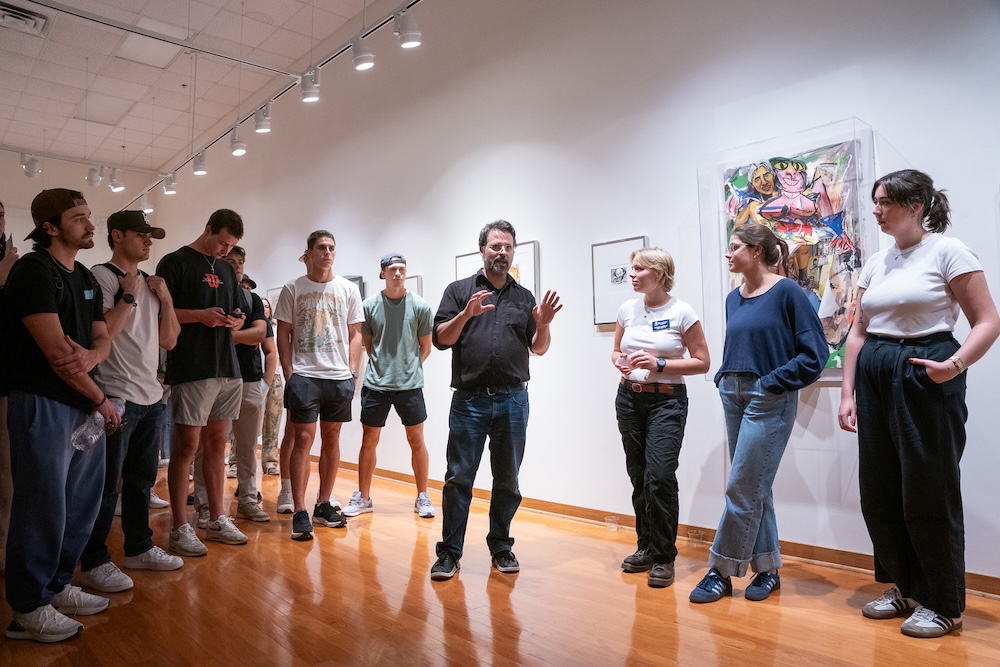 For the students involved, this wasn't just another class project. It was a deep dive into the world of art curation, challenging them to engage with Grooms' work on a professional level.
For the students involved, this wasn't just another class project. It was a deep dive into the world of art curation, challenging them to engage with Grooms' work on a professional level.
Madison DeOrio, a sophomore art history major, reflected on the experience. “I knew what my areas of interest were before taking this class,” she explained. “But I think the project really helped me better understand what a museum as an institution means, and what it could mean for my career. It improved my ability to speak about art, exhibitions and the curation process from start to finish.”
Gwyneth Cunningham, a senior art history major, emphasized the hands-on nature of the experience. “It's something you can't really learn until you're actually doing it,” she said. “Having this experience at the undergrad level is incredibly valuable.”
From Theory to Practice
 The project offered students a rare glimpse into the realities of museum work, from the logistical challenges of arranging artworks to the nuanced decisions involved in presenting an artist's vision to the public.
The project offered students a rare glimpse into the realities of museum work, from the logistical challenges of arranging artworks to the nuanced decisions involved in presenting an artist's vision to the public.
DeOrio described the process. “I was there from the initial brainstorming to seeing the final product in the Leu Gallery. It was such a rewarding experience and made me feel part of something special. It encouraged me to look into this more as a career.”
Cunningham reflected on the project's impact on her career aspirations. “It can be hard to get those opportunities, like curating shows of this scale, to know if you're good at it or if you like doing it,” she said. “It helped me realize this is something I could do and enjoy, while also understanding all the work that it actually entails.”
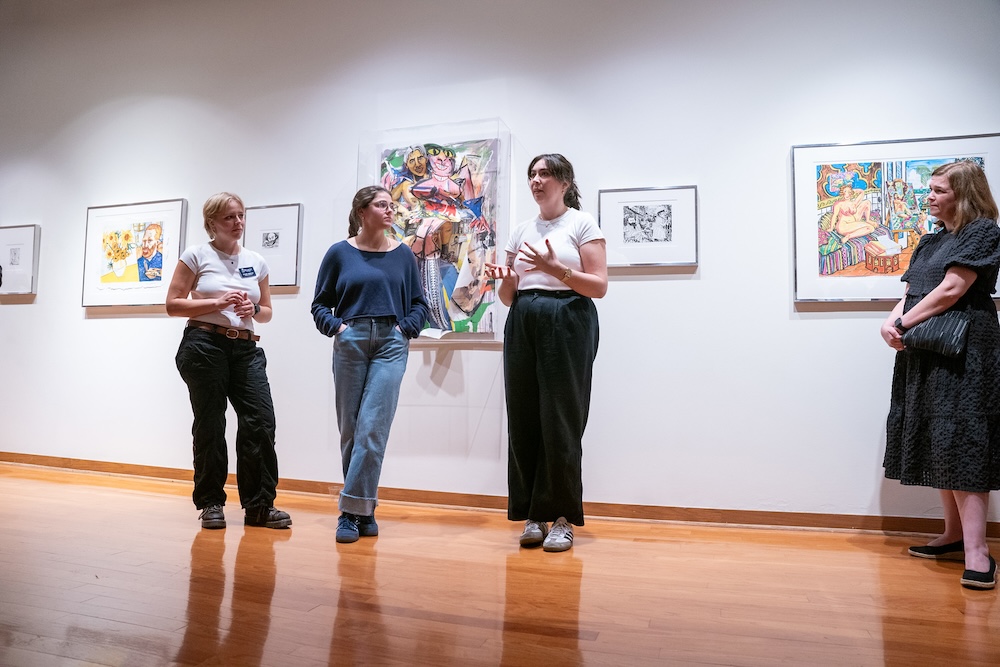 The students were tasked with developing three different exhibition proposals: a survey show, a thematic show and a focused exhibition based on theory. The students proposed each of their ideas to the jury who ultimately decided to pick the survey show option. To narrow down the works that would be included was no small task, said Cunningham, as “Red Grooms has so much incredible work to choose from.”
The students were tasked with developing three different exhibition proposals: a survey show, a thematic show and a focused exhibition based on theory. The students proposed each of their ideas to the jury who ultimately decided to pick the survey show option. To narrow down the works that would be included was no small task, said Cunningham, as “Red Grooms has so much incredible work to choose from.”
The Power of Firsthand Experience
Seeing their curatorial vision come to life and experiencing the art in person was transformative for the students. DeOrio's perspective shifted dramatically. “Initially, I was not Red Grooms' biggest fan, but seeing his work in person completely changed my view. It reminded me of the importance of viewing art firsthand.”
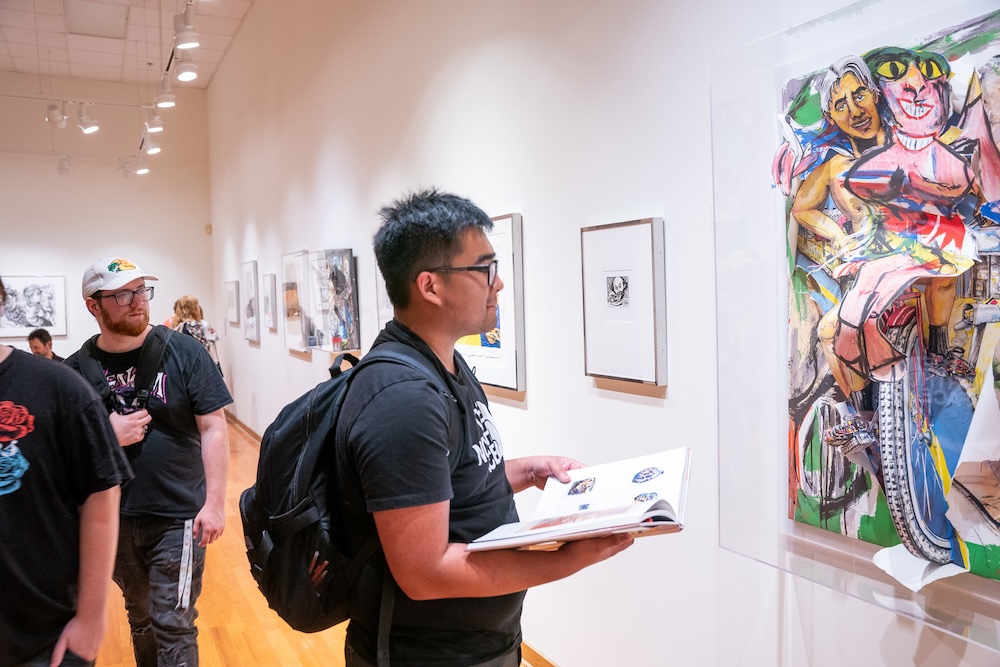 She elaborated on the difference between viewing art in catalogs versus in person. “We got to flip through the catalog, and that was how we selected the pieces, but the 3D pieces were hard to understand from just images in the book,” she explained.
She elaborated on the difference between viewing art in catalogs versus in person. “We got to flip through the catalog, and that was how we selected the pieces, but the 3D pieces were hard to understand from just images in the book,” she explained.
“When I walked into the gallery and everything was finished, and I saw the mixed media works, it jumped out from the wall,” DeOrio continued. “It was a great reminder to open yourself up to new possibilities and new perspectives and ideas that you might not be as familiar with or interested in.”
Kiri Hassinger, a senior media and entertainment industries major, had a similar experience with her favorite piece, “Picasso Goes to Heaven.” “When I walked in and I saw it, it was like complete tunnel vision. I thought, ‘I can't believe that this is what I'm looking at right now,’” she reflected. “Seeing it in person was breathtaking. It was amazing to see it transform from a page in a book to a real artwork in front of me.”
Nashville's Art Comes Home
 Red Grooms, a pop art icon known for his colorful, satirical depictions of American life, has strong ties to the city as a Nashville native. By bringing his work to Belmont's campus, these students not only curated an art exhibition but also connected the University more deeply to the city's rich artistic heritage.
Red Grooms, a pop art icon known for his colorful, satirical depictions of American life, has strong ties to the city as a Nashville native. By bringing his work to Belmont's campus, these students not only curated an art exhibition but also connected the University more deeply to the city's rich artistic heritage.
Williams elaborated on Grooms' significance as a recurring figure in the development of 1960s art and beyond. But Grooms' appeal extends beyond his historical importance. Williams noted, “There's a kind of playful engagement with popular culture and with everyday life in his work that makes him an incredibly engaging and accessible artist,” he said.
This accessibility is evident in the exhibition's centerpiece, a scene depicting the space in front of New York City's Morgan Library, showcasing vibrant street life and culture.
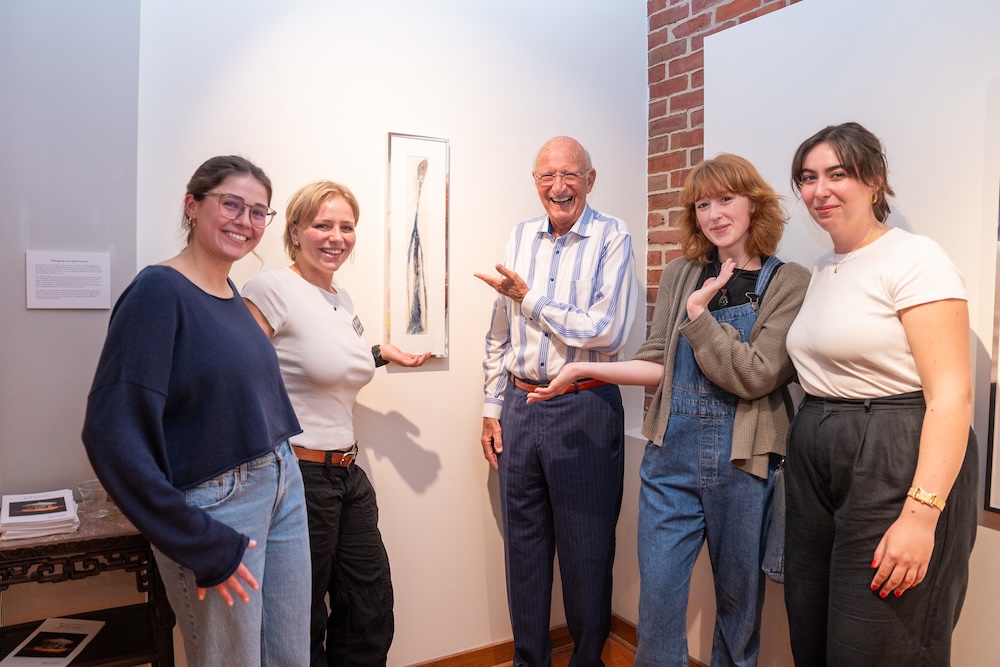 “He was an observer of everyday life, and he makes you think about this as a worthy subject of art,” Williams explained. This perspective offers visitors a unique lens through which to view the ordinary world around them, transforming the mundane into the extraordinary.
“He was an observer of everyday life, and he makes you think about this as a worthy subject of art,” Williams explained. This perspective offers visitors a unique lens through which to view the ordinary world around them, transforming the mundane into the extraordinary.
Cunningham emphasized the exhibition's significance for Nashville's art scene. “We've always had a beautiful, dynamic and exciting art scene here in Nashville, and we have some incredible artists who've come from here,” she said. “This project shows it's possible to pursue an arts career here, just like in bigger cities.”
Visit the Exhibit
Now, this celebration of Nashville's artistic legacy and the students' curatorial efforts is open for all to experience.
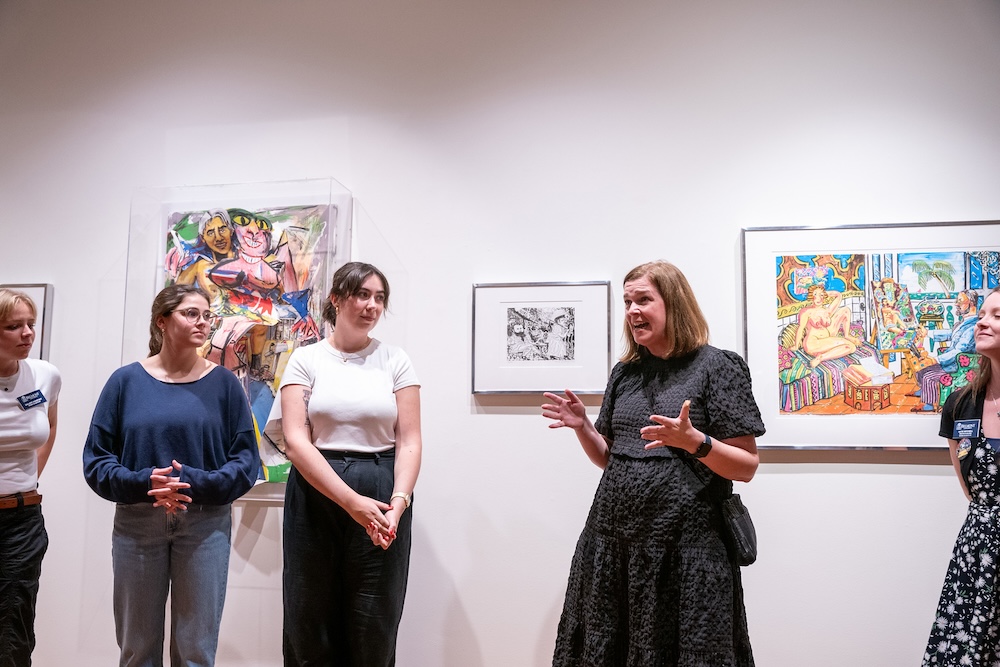 Open to the public through the end of the semester in Belmont's Leu Art Gallery, the exhibit showcases not only Red Grooms' vibrant work but also the potential of hands-on learning in art education. For the students, it was an experience that has shaped their understanding of art, curation and their own career aspirations.
Open to the public through the end of the semester in Belmont's Leu Art Gallery, the exhibit showcases not only Red Grooms' vibrant work but also the potential of hands-on learning in art education. For the students, it was an experience that has shaped their understanding of art, curation and their own career aspirations.
As visitors explore the exhibition, they're witnessing more than just art – they're seeing the results of an innovative educational approach that brings art history to life. This project has bridged the gap between academic study and professional practice, challenging students to broaden their artistic perspectives while contributing to Nashville's cultural landscape. It stands as a testament to the power of experiential learning in preparing the next generation of curators for their field.
Learn More
Art Programs at Belmont

